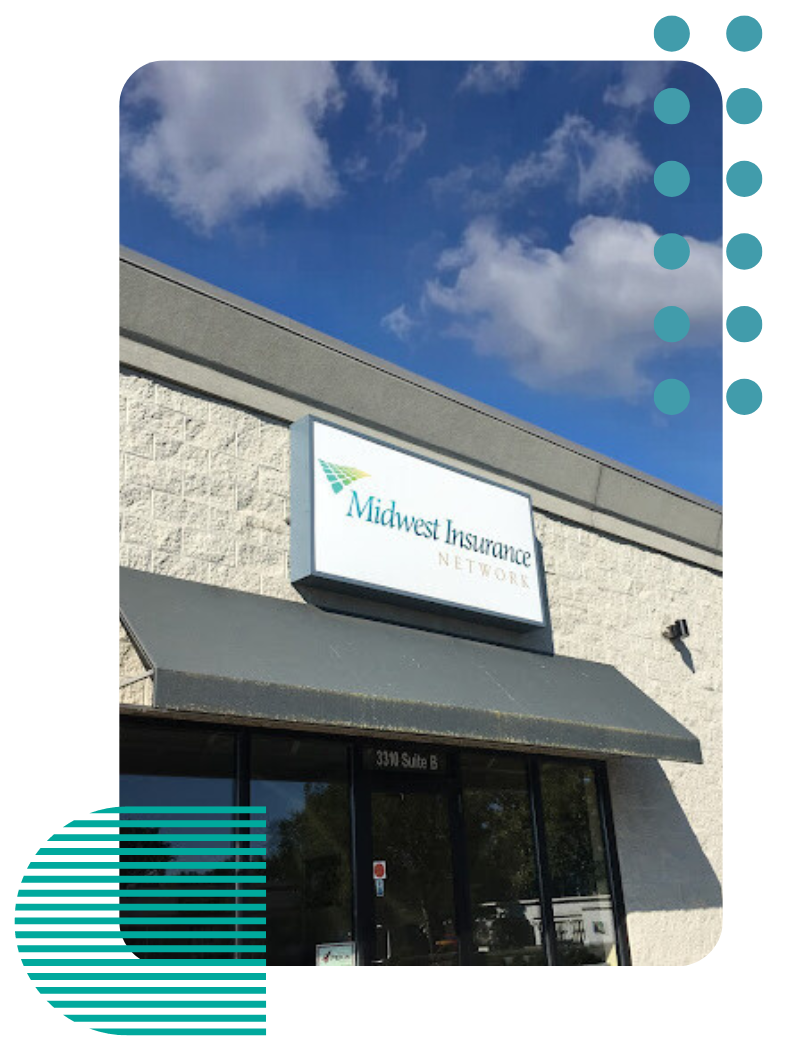Ohio Box Truck & Final-Mile Delivery Insurance

See How We're Different
or call us: 419-720-5825
Top 3 Recommended Policies
Index
Understanding Ohio Box Truck and Final-Mile Delivery Operations
Key Insurance Coverage Types for Ohio Box Trucks and Final-Mile Delivery
Market Challenges and Trends Affecting Insurance in Ohio
Practical Tips for Securing the Right Insurance Coverage
Infrastructure Developments Supporting Ohio’s Freight and Delivery Sector
Conclusion: Navigating Ohio’s Box Truck and Final-Mile Delivery Insurance Landscape
Contact Us
Phone
agency@midwest-insure.com
Location
Northwood, OH
3310 Woodville Road, Suite D
Northwood, OH 43619
Elmore, OH
361 Rice Street
Elmore, OH 43416
Ohio’s freight and delivery landscape is evolving rapidly, driven by surging demand for efficient logistics and the rise of e-commerce. With the state moving nearly a billion tons of freight valued at over a trillion dollars annually, the role of box trucks and final-mile delivery services has never been more critical. However, with growth comes complexity—especially when it comes to insurance coverage tailored for these specialized transportation needs.
This comprehensive guide explores everything you need to know about Ohio box truck and final-mile delivery insurance, from understanding the unique risks involved to navigating the current market challenges. Whether you’re a fleet operator, a small business owner, or a logistics manager, this article will provide valuable insights to help you protect your operations and optimize your delivery strategies.
Before diving into insurance specifics, it’s important to appreciate the scale and significance of Ohio’s freight system. In 2022, Ohio’s freight system moved an astounding 980 million tons of freight, valued at $1.1 trillion—the seventh-largest value among all states. This highlights the state’s critical role as a transportation hub and underscores why specialized insurance coverage is vital for businesses operating here. For more on Ohio’s freight dynamics, check out
The Road Information Program (TRIP).
Understanding Ohio Box Truck and Final-Mile Delivery Operations
Box trucks and final-mile delivery services form the backbone of Ohio’s logistics network, especially as consumer expectations for fast, reliable delivery continue to rise. Final-mile delivery refers to the last leg of the shipping process, where goods are transported from a distribution center or warehouse directly to the customer’s doorstep. This phase is often the most complex and cost-intensive part of the supply chain.
Box trucks, typically ranging from 10 to 26 feet in length, are the preferred vehicles for these deliveries due to their maneuverability and cargo capacity. They are widely used by retailers, couriers, and logistics companies to meet the growing demand fueled by e-commerce. The versatility of box trucks allows them to navigate tight urban streets and residential neighborhoods, making them ideal for delivering everything from furniture to groceries.
As companies invest in expanding their private fleets, optimizing delivery routes and fleet size becomes crucial. Anníbal Sodero, Assistant Professor at Ohio State University, highlights that “we developed a model that considers investments a company is going to make to calculate the optimal number of deliveries they can make using their own private fleet.” This approach helps businesses balance operational costs with service quality, a key factor in managing insurance risks effectively. Learn more about this research at Ohio State University’s Fisher College of Business.
Why Specialized Insurance Matters
Box truck and final-mile delivery operations face unique risks that general commercial auto insurance may not fully cover. These include higher exposure to accidents in urban environments, cargo damage, theft, and liability issues related to property damage or bodily injury during deliveries. Additionally, the increasing value of goods transported—expected to nearly double in inflation-adjusted terms by 2022—amplifies potential financial losses from claims.
Given these factors, specialized insurance policies that address both vehicle and cargo risks, as well as liability protections tailored to delivery operations, are essential. This ensures businesses remain compliant with Ohio’s regulatory requirements while safeguarding their assets and reputation. Moreover, the integration of technology in logistics, such as GPS tracking and route optimization software, not only enhances efficiency but also plays a significant role in risk management. By monitoring vehicle performance and delivery conditions in real-time, companies can proactively address potential issues before they escalate, thereby reducing the likelihood of accidents and claims.
Furthermore, as the demand for sustainable practices grows, many Ohio-based delivery services are exploring eco-friendly box truck options. Electric and hybrid models are becoming increasingly popular, not only for their reduced environmental impact but also for the potential cost savings in fuel and maintenance. This shift towards greener logistics solutions reflects a broader trend in the industry, where sustainability is becoming a key consideration in operational strategies. As companies adapt to these changes, they must also navigate the complexities of insurance coverage that accommodates new technologies and vehicle types, ensuring they are protected in an evolving market landscape.

Key Insurance Coverage Types for Ohio Box Trucks and Final-Mile Delivery
When selecting insurance for box trucks and final-mile delivery services in Ohio, it’s important to understand the core coverage types that address the specific risks involved. Below are the primary insurance components to consider:
1. Commercial Auto Liability Insurance
This coverage protects against third-party claims for bodily injury or property damage caused by your box truck drivers during delivery operations. Given the rise in physical damage claims—up to 25% increase recently—this coverage is critical to mitigate financial exposure from accidents.
Moreover, umbrella liability policies can extend coverage limits, providing additional protection. However, the cost of umbrella liability has also risen significantly, ranging from 25% to 100% increases, reflecting the challenging market conditions in transportation insurance today. For a detailed look at these trends, see the 2024 State of the Market report by Risk Strategies. As the number of delivery vehicles on the road continues to grow, understanding the nuances of liability coverage becomes essential for safeguarding your business against potential lawsuits and claims that can arise from everyday operations.
2. Physical Damage Insurance
This insurance covers repair or replacement costs if your box truck is damaged due to collisions, theft, vandalism, or natural disasters. With the increasing number of trucks on Ohio’s highways, especially near major freight corridors like Interstate 70, protecting your fleet from physical damage is more important than ever. Additionally, the varied weather conditions in Ohio, from heavy snow in winter to thunderstorms in summer, can pose unique risks to box trucks. Thus, having comprehensive physical damage insurance not only protects your investment but also ensures that your operations can continue with minimal disruption in the face of unforeseen events.
3. Cargo Insurance
Cargo insurance protects the goods being transported against loss or damage. For final-mile delivery, where high-value consumer goods are frequently handled, this coverage is vital. The projected 99% increase in the value of freight moved by trucks in Ohio underscores the importance of having adequate cargo protection in place. Additionally, with the rise of e-commerce, the volume of goods being transported has surged, leading to more complex logistics and higher stakes for delivery companies. Ensuring that your cargo insurance is tailored to the specific types of goods you transport can provide peace of mind and financial security, especially in a market where consumer expectations for timely and safe delivery are at an all-time high.
4. Workers’ Compensation Insurance
Delivery drivers and warehouse workers face occupational hazards daily. Workers’ compensation insurance ensures medical benefits and wage replacement if employees are injured on the job, helping businesses comply with Ohio labor laws and maintain workforce stability. In an industry where the physical demands are significant, the risk of workplace injuries can lead to costly claims and operational disruptions. Implementing safety training programs and maintaining a culture of safety can further reduce the likelihood of accidents, but having robust workers’ compensation coverage remains a critical safety net for both employees and employers.
5. General Liability Insurance
This coverage addresses claims arising from non-vehicle-related incidents, such as slip-and-fall accidents on your premises or damage caused during loading and unloading. It complements auto liability by covering broader operational risks. Given the nature of final-mile delivery, where interactions with customers and the public are frequent, general liability insurance can shield your business from unexpected claims that could arise from everyday activities. Furthermore, as businesses adapt to new delivery models and technologies, ensuring that your general liability coverage evolves with your operations is essential to protect against emerging risks in a dynamic marketplace.
Market Challenges and Trends Affecting Insurance in Ohio
The transportation insurance market in Ohio and nationwide is facing significant headwinds. The trucking industry remains a hard market, with rising premiums and stricter underwriting standards. According to the Insurance Journal’s 2024 report, physical damage claims have increased by up to 25%, umbrella liability premiums have surged between 25% and 100%, and auto liability rates have risen 20% to 25%. These increases reflect heightened risk perceptions and claim severity.
Additionally, the Federal Motor Carrier Safety Administration reports a 7.6% reduction in carriers and a 10.7% reduction in brokers from December 2022 to March 2024. This consolidation can lead to less competition and higher insurance costs for remaining operators, especially smaller fleets and independent contractors. For more on these industry shifts, visit The Supply Chain Xchange.
Despite these challenges, technological advancements and data-driven models are helping businesses optimize operations and reduce risks. For example, computational algorithms developed from real-world transit data have demonstrated superior efficiency and solution quality compared to traditional methods, indicating promising avenues for risk management in delivery logistics. Explore this research at arXiv.org.
Moreover, the integration of telematics and real-time tracking systems is revolutionizing how trucking companies manage their fleets. By utilizing GPS and onboard diagnostics, operators can monitor vehicle performance, driver behavior, and route efficiency. This not only aids in reducing operational costs but also enhances safety measures, which can lead to lower insurance premiums in the long run. Insurers are increasingly recognizing the value of such technologies, often offering incentives for fleets that adopt these systems.
Furthermore, the evolving regulatory landscape is also playing a crucial role in shaping the insurance market. New safety regulations and compliance requirements are being introduced to address the rising accident rates and improve overall road safety. These regulations can impose additional costs on trucking companies, but they also present an opportunity for insurers to develop tailored products that cater to the specific needs of compliant operators. As the industry adapts to these changes, the importance of proactive risk management strategies will become even more pronounced, paving the way for innovative insurance solutions that align with the future of transportation.
Practical Tips for Securing the Right Insurance Coverage
Choosing the right insurance for Ohio box trucks and final-mile delivery requires a strategic approach that balances coverage needs with budget constraints. Here are some practical tips to guide the process:
Assess Your Fleet and Delivery Operations
Start by evaluating the size and composition of your fleet, typical delivery routes, cargo types, and operational risks. For instance, a company operating primarily in urban areas may face different liability exposures than one serving rural regions. Understanding these nuances helps tailor insurance policies effectively. Additionally, consider the frequency of deliveries and the types of goods transported. High-value items or hazardous materials may require specialized coverage, while seasonal fluctuations in delivery volume can also influence insurance needs.
Work with Experienced Insurance Brokers
Engage brokers who specialize in transportation and logistics insurance. They can navigate the complex market, identify suitable carriers, and negotiate competitive terms. Given the current hard market, expert guidance is invaluable. A knowledgeable broker can also provide insights into emerging trends and regulatory changes that could impact your coverage, ensuring you remain compliant and adequately protected. Their expertise can save you time and money, allowing you to focus on running your business while they handle the intricacies of insurance procurement.
Consider Vehicle Selection and Maintenance
Investing in reliable vehicles with favorable safety ratings can reduce insurance premiums. Taki Darakos, Vice President of Vehicle Maintenance and Fleet Services at Pitt Ohio, notes, “We believe the Mack MD will provide the best range and payload from a value standpoint,” highlighting the importance of vehicle choice in operational efficiency and risk management. Regular maintenance schedules not only prolong vehicle life but also enhance safety, further mitigating risks associated with accidents. Additionally, implementing telematics systems can provide real-time data on vehicle performance and driver behavior, allowing for proactive measures to improve safety and efficiency. Learn more at Inbound Logistics Magazine.
Implement Safety and Training Programs
Driver safety training, regular vehicle inspections, and adherence to regulatory compliance can lower accident rates and claims, positively impacting insurance costs. Establishing a culture of safety within your organization is crucial; consider conducting regular safety meetings and workshops to keep safety at the forefront of your operations. Furthermore, incentivizing safe driving behaviors through rewards or recognition programs can motivate drivers to prioritize safety, ultimately leading to fewer incidents and lower insurance premiums.
Review and Update Coverage Regularly
As your business grows or changes, periodically reassess insurance needs to ensure adequate protection without overpaying. The projected 56% increase in freight weight moved by trucks in Ohio by 2022 signals ongoing growth that may necessitate coverage adjustments. Additionally, staying informed about industry trends, such as advancements in technology or changes in regulations, can help you anticipate shifts in your insurance requirements. Engaging in annual reviews with your broker can ensure that your coverage evolves alongside your business, providing peace of mind as you navigate the complexities of the logistics landscape.

Infrastructure Developments Supporting Ohio’s Freight and Delivery Sector
Ohio’s infrastructure investments also play a role in shaping the insurance landscape. For example, Love’s recently opened a 17,600-square-foot travel stop in Belmont, Ohio, featuring 121 truck parking spaces near Interstate 70. Facilities like this improve driver rest opportunities and reduce roadside parking risks, indirectly influencing insurance claims related to accidents or theft. Details on this development can be found at Cass Information Systems.
Such infrastructure enhancements contribute to safer and more efficient freight movement, which benefits insurers and insureds alike by mitigating risk factors.
Conclusion: Navigating Ohio’s Box Truck and Final-Mile Delivery Insurance Landscape
Ohio’s position as a freight powerhouse, combined with the explosive growth in e-commerce and delivery services, makes box truck and final-mile delivery insurance a critical consideration for businesses operating in the state. Understanding the unique risks, market conditions, and coverage options is essential to safeguarding assets and maintaining operational resilience.
By leveraging expert insights, embracing technological advancements, and partnering with knowledgeable insurance professionals, companies can navigate the challenging insurance market effectively. Staying informed about industry trends and infrastructure developments further enhances risk management strategies.
Ultimately, securing the right insurance coverage is not just about compliance—it’s a strategic investment that protects your business’s future in Ohio’s dynamic freight and delivery environment.



